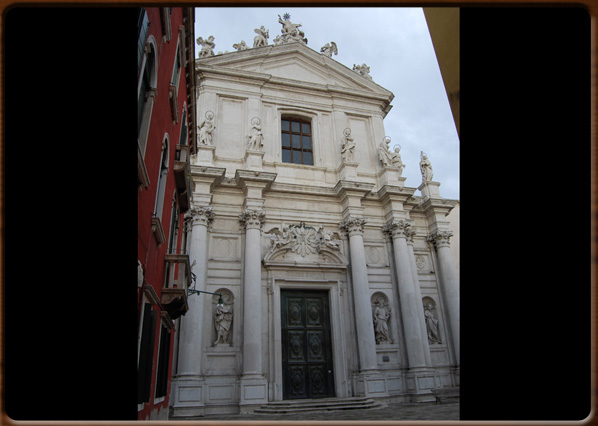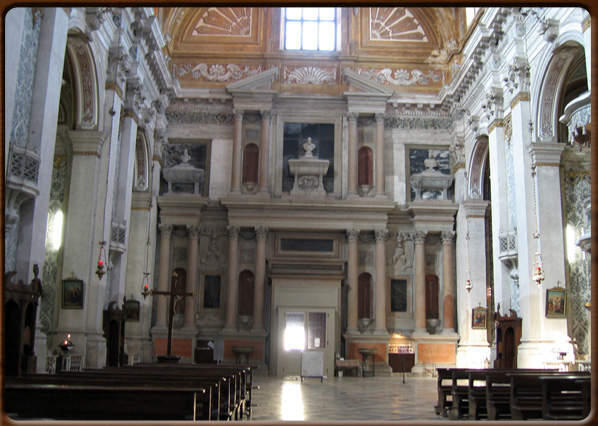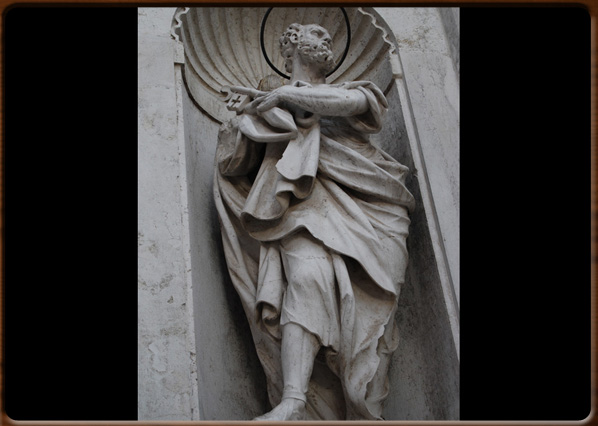
Church of S. Maria Assunta

Church of S. Maria Assunta, inside

Saint Peter stuatue on the façade



No video
The plans to build a new church – the church of Santa Maria Assunta (or dei Gesuiti as the Venetians call it) – on the foundations of the old Chiesa dei Crociferi were finally settled after a long power struggle between the Jesuits and the Venetian government.
In the early 1600s, when a new Patriarch of Venice needed to be elected, the Jesuits sided with the Pope and so were expelled from the city. The Pope retaliated by issuing an interdict.
It was only in 1657, when relations between Venice and the Holy Roman Church were again friendly, that the Company of Jesus was finally readmitted.
The highly ornate baroque church of Santa Maria Assunta was built between 1715 and 1730 on the model of the Chiesa del Gesù in Rome.
The interior has some marvellous walls that give you the impression of being covered by Damask wall hangings thanks to the clever inlay of coloured marble, creating the “folds” of the material. This “fabric” forms the framework for two masterpieces: above the first altar on the left is a Martyrdom of St. Lorenzo (c. 1555) by Titian, at the time described by the art historian Hugh Honour as “the first true night-time scene in the history of art”; in the left-hand branch of the transept is an Assumption (1554-55) by Tintoretto.
1600 - 1700 - CANNAREGGIO - rev. 0.1.6